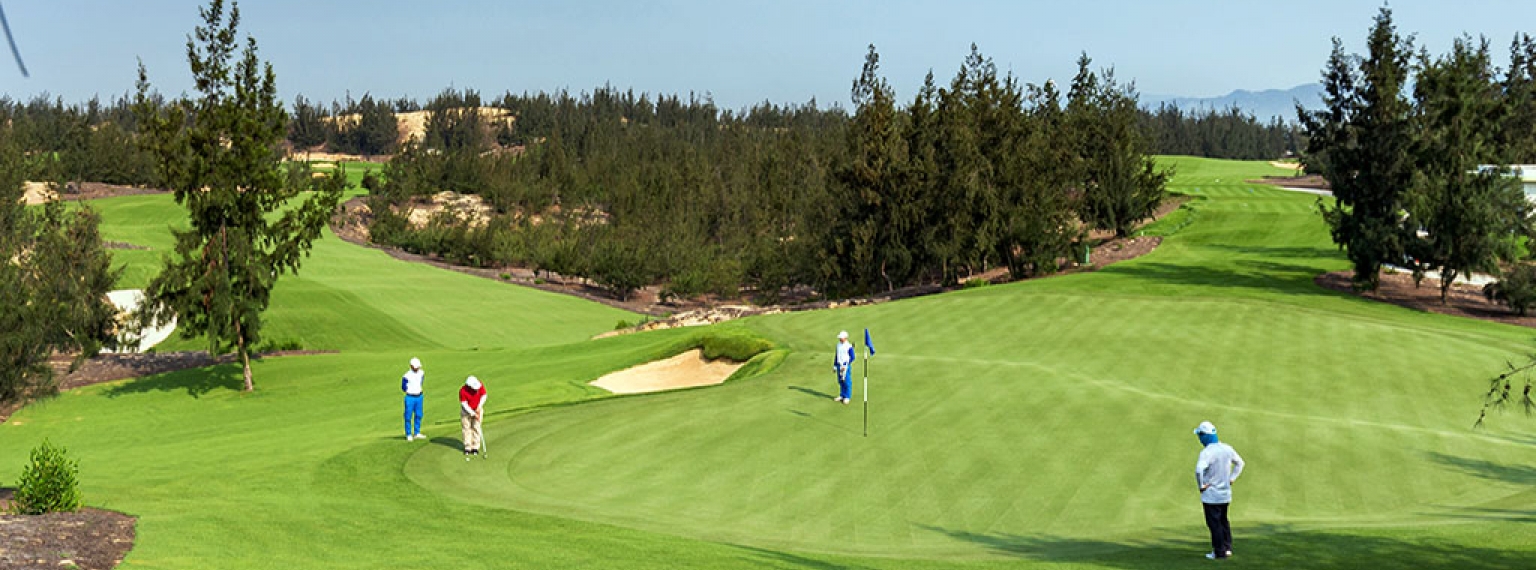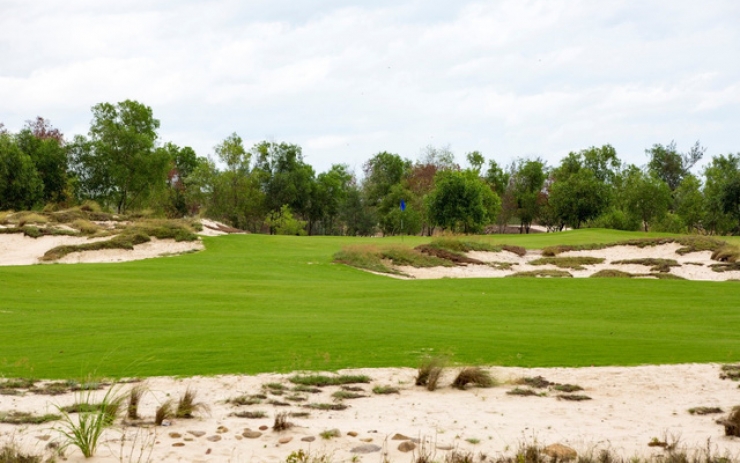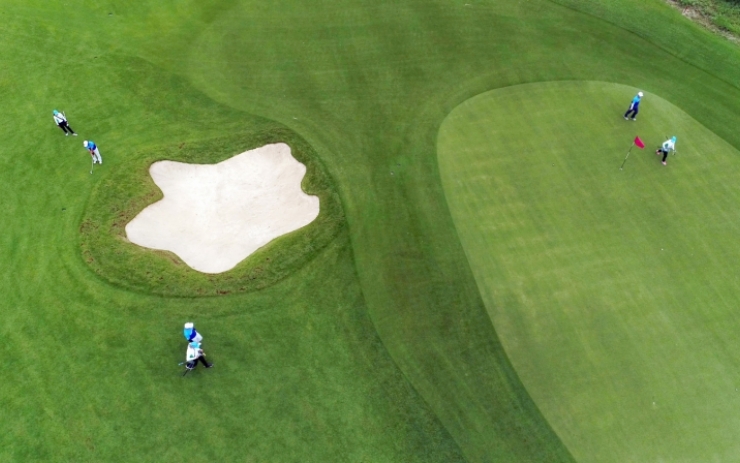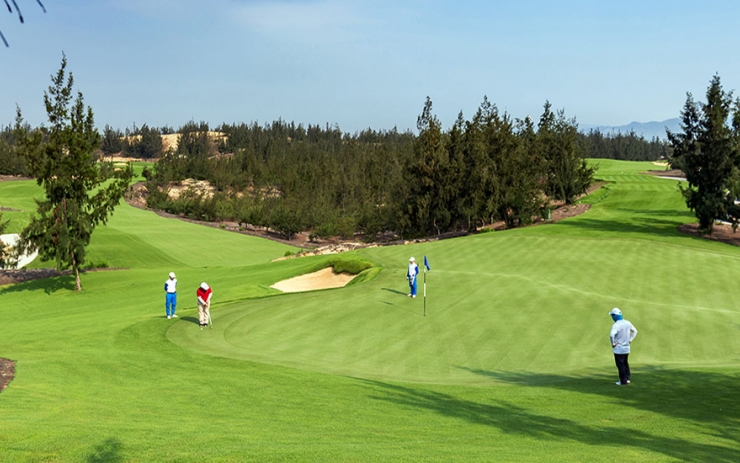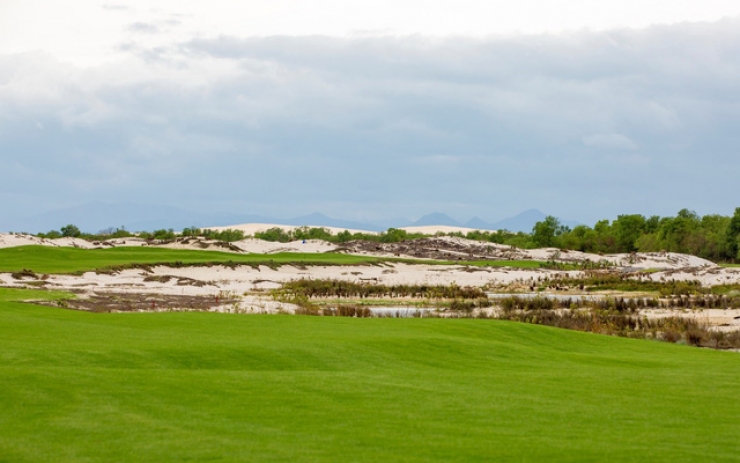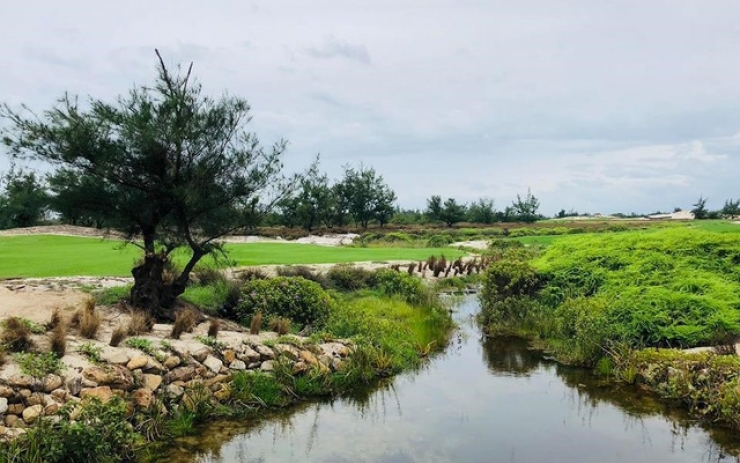FLC Quang Binh Beach & Golf Resort, Forest Dunes
| Description | |
|---|---|
| Designer | Brian Curley |
| Holes / Par / Yardage | 18 holes par 72 (7350 yards) |
| Established | 2018 |
| Location | 20 ' from Dong Hoi |
| Distance | on-site at FLC Quang Binh Beach & Golf Resort |
| Closed on | Open everyday |
| Max. golfers per group | 4 persons |
| Facilities | |
|---|---|
| Driving Range |
|
| Night Golf |
|
| Caddy |
|
| Golf Carts |
|
| Golf Shop |
|
| Restaurant |
|
| Accommodation |
|
Forest Dunes is the 1st golf course in a huge complex project FLC Golf Links combine with 5 Star Hotels, Resorts with total 10 golf courses and it’s the biggest real estate project in Central Vietnam with about 2,000 hectares
FLC Golf Links in in Dong Hoi, main city of Quang Binh Province lying 6km along the coastal beach with white sand and natural pine-straw trees. Designed by Brian Curley, the course is one of the most natural course in Vietnam
Utilizing the natural geography, sloppy and pines forest, the course offers large fairway and broad green
The course has only four bunkers; others are sand and scrub played as waste areas.
The Forest Dunes cost has up and down landscape can be as high as 40m. The Clubhouse is spacious attached with Resort on the side. Golfers can stay 2 or 3 nights and enjoy golfing, well spring and other activities in Quang Binh
Quang Binh is also famous for its World Biggest Carves: Phong Nha, Son Doong carves and some other tourist attractions
You can take domestic flight from Hanoi or Hochiminh City to Quang Binh, from Da Nang it takes more than 5 hours by bus to get there
FLC Quảng Bình Golf Links, Ocean Dune
Ocean Dunes is the 2nd course out of the total 10 courses in the big project by FLC with total 2,000 hectares, designed by Schmidt – Curley design Inc
The Ocean Dunes layout is located south of Dong Hoi – that runs along a six-kilometre beach. It is the second of a possible ten courses for the complex, with the first – Forest Dunes – having opened last year. “It is a very dramatic contrast of white sand, emerald green paspalum turf, dark green pines, multi-coloured wetlands, and sparkling blue waterways, all overlooking the ocean,” said Curley.
Ocean Dunes begins playing into a native forest from elevated tees that make up part of a man-made dune complex that includes the first, tenth and fifteenth tees, as well as the ninth and fourteenth greens. “This area had been the flattest portion of the site, but excavation of nearby irrigation lakes created the material to create the dune and raise the clubhouse pad,” said Curley.
“The site offered plenty of natural casuarina pine vegetation along with the white sand base. These sandy expanses were also covered with wispy showings of native bunch grasses and pine needles, creating a rugged look. Much of the sand is incorporated not as typical formal bunkering, but as wide swathes of open sand and as up-dunes.
“Ocean Dunes plays along the natural terrain, tying into the surrounds. This pattern is broken in some instances, including the created dune complex for the large double green for the second and fifth holes and the tees for the third. The third plays from atop a high point that was expanded during construction into a large dune and features a deep gouged out low, with a prominent centreline dune slightly blinding the wide fairway.
“Open sand areas feature transitional outer edges that work their way to the natural perimeter and the turf areas, consequently, meander along irregular lines that mimic the natural terrain,” continues Curley. “Great care was taken to naturally drain the turf areas without any need for drains, further pushing the natural look.”
The par-three fourth and seventh each feature backdrops of the primary dune complex that was naturally created off the beachfront.
“The mid-length par-three twelfth plays into the teeth of the wind directly out to the beach, but is followed up by a short, reachable par four with the wind at your back and features a massive ridgeline dune that is largely turf. If carried, the ball is propelled towards the large undulating green,” said Curley. “If not carried, balls will likely roll back leaving a blind second shot.
“The course ends with a stretch of beachfront holes, finishing with pars of 4-3-5, including the reachable par-five eighteenth that plays over a large waterway into a dramatic backdrop of dunes and features a bowled-out green surrounded by open sand.
“In recent designs, I have focused much more on creating greens that accept and hold good shots with bowls, kick-slopes, feeder ridges, slight backboards, etc. In this market, there is a strong demand to bring the visuals off the tee and not dumb down the experience from tee to green, all while keeping playability intact without slowing play.”
Source: Golf Course Architecture



